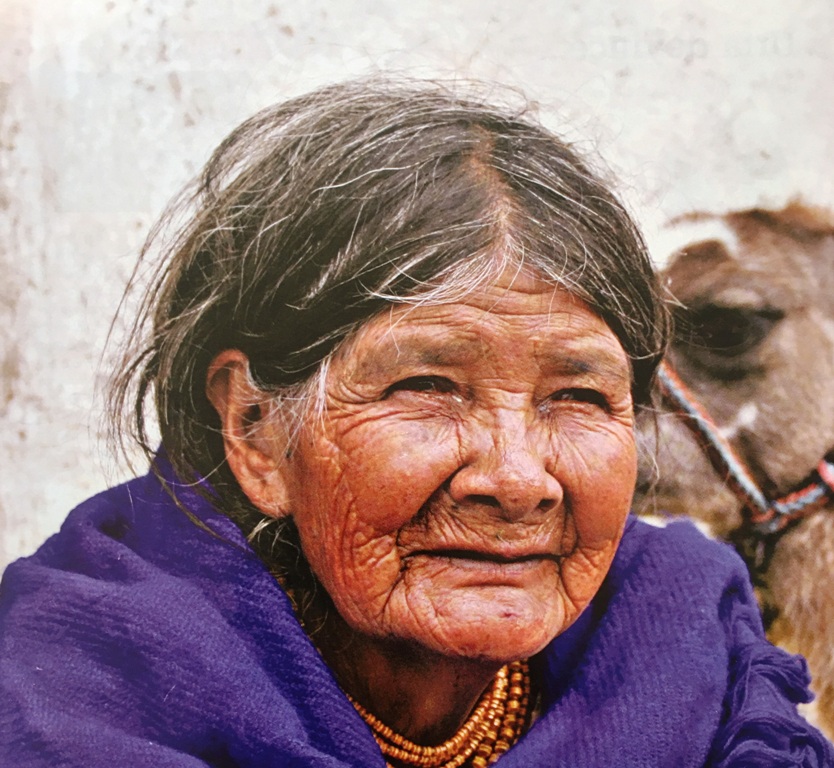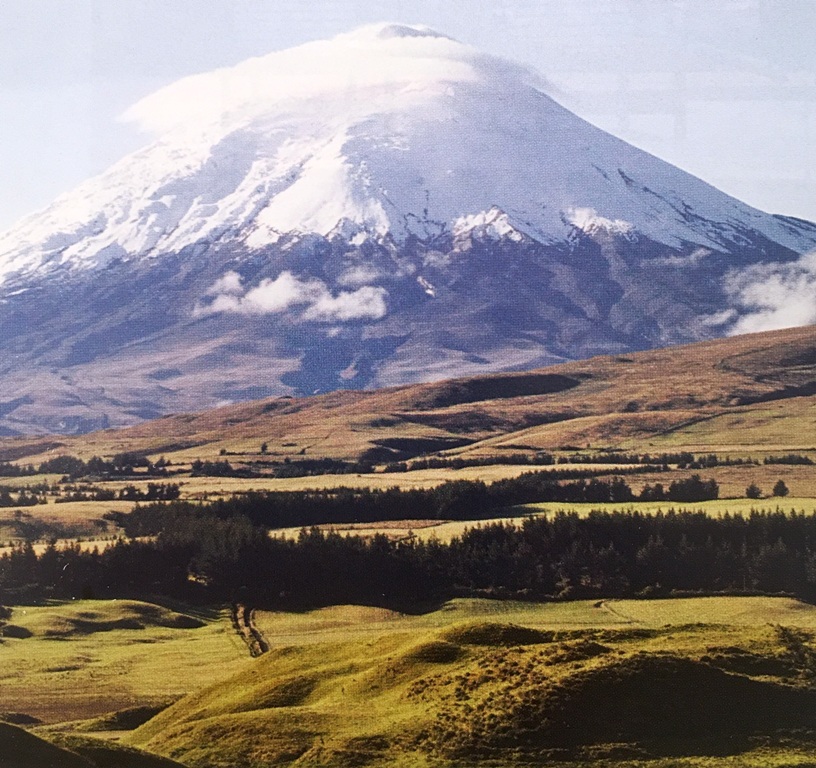In the middle of the world; ECUADOR

The fact that South America is the second smallest country should not arouse your prejudices. Ecuador has more to offer than the biggest ones.
The interior of this tiny country is full of beauty. Despite being a very small country, Ecuador manages to capture natural diversity, culture and entertainment within its borders. In one day you will spend in Ecuador, it is possible to see different places from the Amazon Basin to the snow-covered Andes, from tropical forests to the Pacific Ocean beaches where you can watch the sunset. One day you can stroll in local markets and another day you may find yourself exploring the Amazon jungle. It may excite you even more to hear that the Galapagos Islands, which inspired Charles Darwin’s development of the theory of evolution, are also within the borders of Ecuador.

Ecuador, one of the democratic republics of South America, is located just above the Equator line, from which it is named. Colombia to the north, Peru to the east and west, and the Pacific Ocean to the west is the only country on the continent that has no border with Brazil, along with Chile. The Galapagos volcanic islands are located 1000 kilometers off the mainland.

Colorful culture fascinates
Ecuador’s colorful culture appears in every aspect of life. Colorful traditional costumes and mountain markets are the first to catch your eye. Colonial buildings, Spanish-inspired architecture, especially the cities of Cuenca and Quito, which are on the UNESCO World Heritage List, are also prominent.
The capital of nightlife, Banos de Agua Santa is also one of the cities not to be missed. Ecuador’s Hispanic origins may include African elements at times. Here, the first traces of humans BC. It dates to the year 3500. Civilizations such as Valdivia, Quitus, and Canari etched their cultures on the land of Ecuador. The lands of Ecuador, which came under the sovereignty of the Incas in 1463 after the bloody wars, started to develop in this period. The land divided between the two sons was divided into two after one of the brothers and their father died. Having won the war between the brothers, Huascar has taken over. The Spaniards, who colonized Ecuador, brought epidemics with them when they arrived. During this period, locals started working for Spanish landowners and Quito was chosen as the administrative city. The city of Quito, with a population of 10,000, remained under Spanish rule for 300 years, and was shaken by the call for independence in 1809. With rapid progress, first Guayaquil and then all other Ecuadorian cities declared their independence.

Having a stable rule, Ecuador underwent a great change with the liberal revolution that came in 1895. The dispute with Peru over the Amazon Basin followed. The country, which came under the rule of military junta between 1972-1979, adopted the last democratic administration. Management troubles still continue since then. As a matter of fact, the country has changed 9 presidents since 1997. It also has a foreign debt of almost 10 billion dollars. 95% of the country is Catholic and 4% Protestant. But it is also possible to come across old beliefs and distorted Christianity in some regions. Ecuadorian cuisine, which has a deep history and various cultures, is generally shaped according to agricultural conditions. Soup, rice and protein meals with lots of meat are always on the table.
Prepare to explore
Quito, the capital of Ecuador, was accepted as a World Heritage Site by UNESCO in the 1970s. The city’s historic city center is considered the best preserved and least changed city center in Latin America. If your time in Quito is limited, the smartest thing to do is go to the Old Town. At first glance, you realize that Quito is very different from other cities in the world. With its narrow streets, restored colonial buildings, lively squares, “Centro Historico”, the historical Old City, is a complete gem. Churches, chapels and monasteries built by artists and workers centuries ago still seem to whisper legends in your ears. The Old Town center is the gateway to the history of the city, like other similar ones in the world. Street vendors, authentic shops, curious tourists …

The third largest city in the country, Cuenca, was also protected by UNESCO in 1999, as it is the best planned Spanish colonial city in the Americas. Cuenca and Quito are actually two magical cities that clash with each other in beauty. In size, Quito is by far the winner, but Cuenca, the most beautiful of the southern colonial cities, manages to overtake the capital. Rio Tomebamba is proudly located on the banks of the river with its cobblestone paths, white painted red clay houses, large plazas and domed churches. Women of Cuenca, who do not lose their historical spirit, prefer to dry their laundry under the sun, even in the 21st century. This adds a different atmosphere to the city. Although it is still stuck in the past, it also winkes with modern times with its international restaurants, art galleries, cool cafes and fun bars.
Cuenca’s foundation story is also very interesting. When the Spaniards came to the region, they saw that the construction of an imposing city was underway where Cuenca is now. The Incas wanted their new city to be like Cuzco in Peru. Sun temples and palaces covered with gold plates mentioned in history are out of the question now, but Cuenca doesn’t seem to need them to steal your heart.
Ecuador does not send adrenaline enthusiasts with empty hands. Mountaineering, trekking, horse riding or even surfing can make you dizzy. If you don’t mind a few bruises and aching bones, this country has a lot to add to you.

You are in the right place for different experiences. Every city in this country offers different experiences. If you want to get lost in history, come to Playa de Oro, which we can call a lost paradise. One of the old African-Ecuadorian towns, Playa de Oro, with its gold-seeking folk and strange but exciting cougar population, is a place that even the people of the country forget. Those who want to meet with nature without going too far can turn to Yasuni National Park, which has a rich jaguar and eagle population. If you say “I have come to rest”, Papallacta Termali, which is the only address of Ecuador covered with volcanic mountains for spa pleasure, awaits you. Brave and adventurous travelers can navigate Quilto a Loop, one of the Andes’ most entertaining routes. You may not find the joy of exploring South America with a rental car anywhere else. The world’s closest point to the sun is also in Ecuador. Chimborazo Volcano, which is the highest peak in the country, is worth seeing.
Another place worth seeing is Galapagos. Although Ecuador is very small, it has many different species in its nature. Most of this natural diversity, most of which is endemic plants, can be found in the Galapagos Islands. The Galapagos, which inspired Charles Darwin many years ago, helped him develop the theory of evolution and wrote The Origin of Species, is a must-see. You may feel like you are falling into an alternate universe and living in a strange utopia. The most special thing about the Galapagos is that the islands are only devoted to the Galapagos legend animals such as penguins and turtles, If you can’t figure out exactly where and what to go for, just go. It is not possible to find anything missing in this picture.